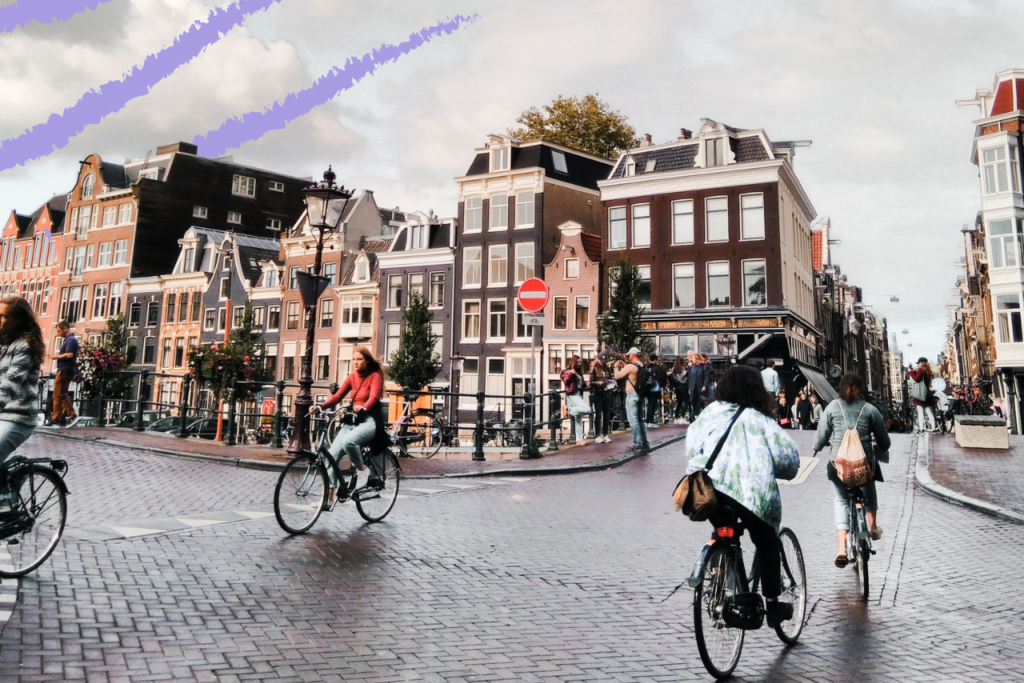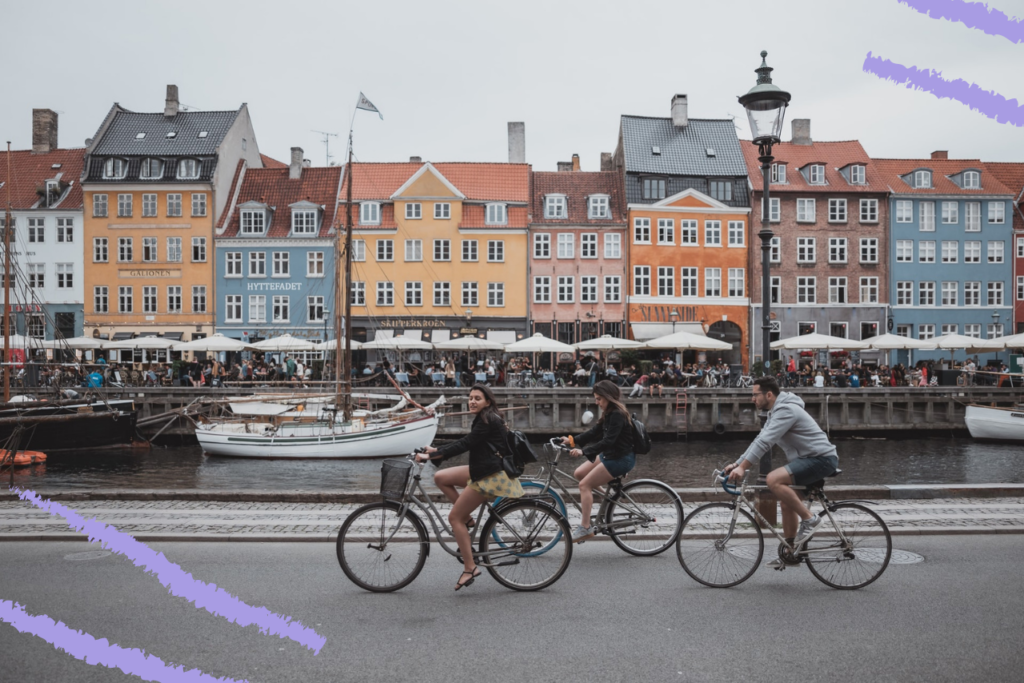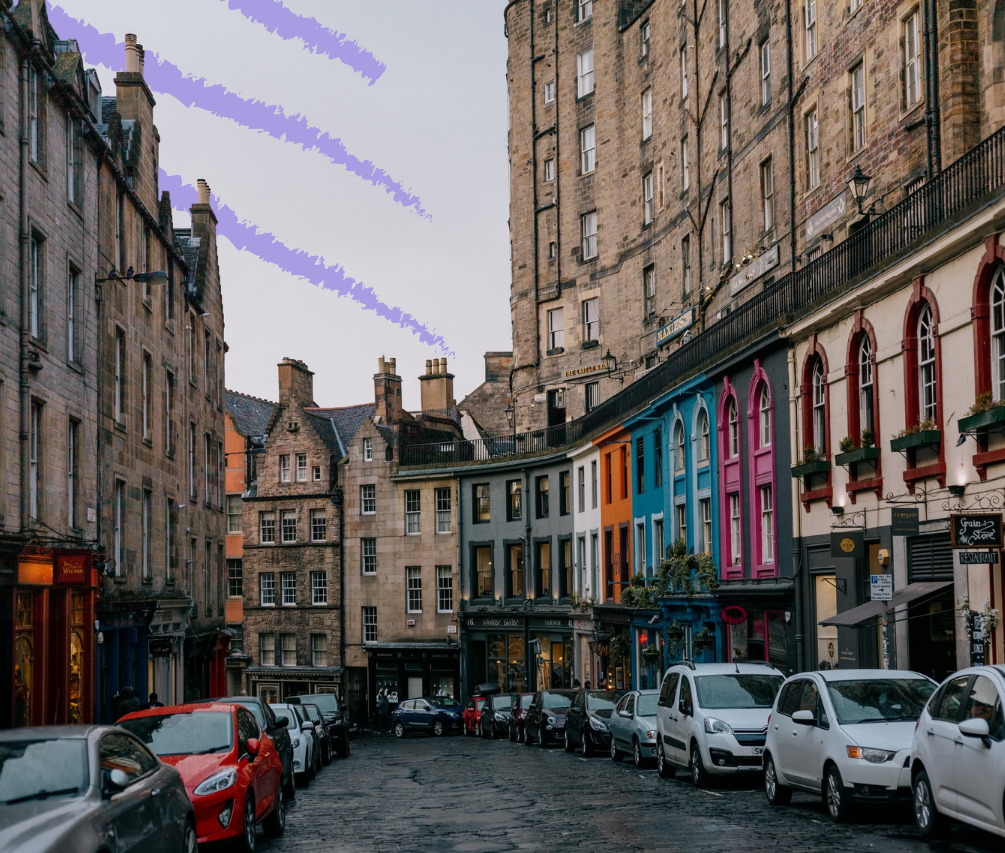Good news! It’s been reported that the climate crisis is on track to destroy capitalism.
Hmmm, perhaps that’s not actually ‘good’ news after all, but let’s face it, holidaymakers may well be looking to change their travel habits as the decade (and crisis) unfolds.
A travel trend predicted to have a bumper 2025 and beyond is the cycling holiday, with climate-conscious, fitness-forward travellers keen to avoid planes, cars and the rest, for something a little more two-wheeled and analogue.
But what makes a great cycling holiday destination? Firstly, the obvious; flat terrain, designated cycle paths, plenty of car-free roads, and places to lock up. And for those travelling from the UK, the opportunity to do the whole thing on two wheels, hopping on the Eurostar or a ferry before cycling onwards. For a handful (well, two handfuls) of places that tick all of those boxes and then some, here are 7 of Europe’s most cycle-friendly holiday destinations.
Amsterdam
Amsterdam, replete with parks and canals, and boasting such flat terrain that the ‘Netherlands’ even translates as ‘low lying country’, is a cyclist’s paradise. The city is as flat as a Dutch pannekoeken and has four times as many bikes as cars, nearly a million in total, with 10’000 bike parking spots around Amsterdam Central Station alone.
A couple of cycling tips for the uninitiated: avoid rush hour – Amsterdam’s roads are super busy, and during this time commuters (both on bikes and cars) become less forgiving to tourists trying out their two wheels. That said, it should be noted that in the whole of the Netherlands, cyclists have right of way at any and all times.
Aside from that, the city has many unwritten cycling rules, such as not to chain your bike to a stranger’s, don’t cycle on footpaths and never, ever get on your bike after indulging in anything psychoactive.
Finally, if you’re looking for a carefully laid framework for your cycling holiday to Amsterdam, you should follow the city’s famous canals. There are a total of 165 canals in the city, providing a natural border to the Pjjp, the Jordaan and the Museum Quarter – making the entire city picturesque and, in its own way, peaceful. Of course, anywhere there’s a canal, there’s also a parallel path, making this a beautiful way to cycle and never got lost in the city.
Read: What to do in Amsterdam for foodies

Copenhagen
A staggering 62% of all commutes (both work and school) are taken on two wheels in Copenhagen, with local government consistently investing in new projects to encourage cycling and make life on two wheels easier for residents of the Danish capital. In fact, every day nearly a million miles are cycled in the city!
All of this makes Copenhagen an incredibly hospitable place to spend a cycling holiday, taking a tour of the sites, sounds and smells that make this such a wonderful city.
Some intrepid explorers even choose to combine their cycling holiday in Copenhagen with a visit to Sweden’s Malmö. Though the city is just 17 miles away, and accessible over the Øresund Bridge, this route isn’t actually available to cyclists.
Fear not; a far more scenic (and significantly longer) cycle route exists, which follows gorgeous coastal paths north before pivoting south into Sweden. Because you didn’t want your cycle to be over in just 17 km, anyway. Heaven!

Edinburgh
We had to include at least one city on home soil for a cycling holiday, and it’s to the UK’s undisputed most bike-friendly city, Edinburgh, that we’re heading next. Here, there are 1751 cycle routes, making up a total of 164,913 km mapped ways, which is enough to satisfy even the most voracious of Velo-enthusiasts. Many of these paths are disused railway lines, presenting flat, navigable terrain.
Alternatively, for those ravenous riders we just mentioned, Edinburgh possesses some famous peaks, the most notorious of which lies outside the city, in the form of the Bathgate Alps. Known as ‘West Lothian’s cycling mecca’. This is a serious ride, make no mistake, with some killer descents sure to test even those with calves made of steel.
If you are keen to experience this dramatic, rugged scenery on two wheels but are somewhat overawed by the challenging terrain, consider instead looking into electric mountain bikes, which boast an integrated motor to boost propulsion up those trickier (see: steeper) ascents. There are plenty of places in Edinburgh itself to hire both normal and electric bikes should you be making the trip up north without a bike.
Back in the city, the Union Canal is perenially popular; it’s flat and traffic-free. The Waters of Leith, stretching 12 miles to Balerno, is another picturesque little ride, and comfortable if you’re keen to take things at more of a canter than a chase.

Split
Croatia’s Minister of Tourism, Gari Cappelli, has recently declared that the country is “committed to developing Croatia as a top destination for active and sustainable tourism.”
We think it’s fair to say that the country is already among the most active of vacation destinations, and Split, Croatia’s second largest city, is one of its most cycle-friendly, too.
Split’s surrounding valleys and mountainous areas, along with the low-traffic and pedestrianised areas in the city, are perfectly suited for cyclists looking to enjoy both challenging and leisurely trails. Closeby, Istri, Hvar Island, and Central Dalmatia are also great spots for cycling, if you’re planning a larger excursion on two wheels.
If that sounds like a plan you’d like to take and run (or rather, cycle) with, did you know that you can now combine cycling tours in Croatia with the ever popular cruises that start from the Port of Split? Such cruises incorporate the excellent variety of cycling routes in and around Split with trips to the islands we just mentioned if you’re seeking more challenging terrain and trails. Heaven!
Bordeaux
The gorgeous, gastronomic powerhouse Bordeaux is a cyclist’s paradise, with some of the finest pit-stops on the planet for when you’re keen to park up and tuck in.
It certainly doesn’t hurt that the city’s surrounding wine regions are generally acknowledged as being the finest producers of premium plonk on the planet, and are eminently cyclable to boot. In fact, Old World wine regions often go hand in hand (hey, put them back on the handlebars!) with great cycling, since the best conditions for vines to thrive is amongst benevolently hilly terrain, and in a hands-on, non-industrial environment. All of which equates to gentle climbs, fresh air and quiet roads.
As the guys at electricrider.co.uk point out, such flat, mellow terrain is perfectly suited to eBikes, if you’re keen to simply take in the views rather than focus on your pedals.
But let’s return to the city, first. Bordeaux is relatively flat and replete with cycle lanes, with the majority of its main cultural landmarks, including Bordeaux Cathedral, the Basilica of St. Michael and Place Royale, the huge central square, all accessible by bike.
There are two well-traversed cycle paths leading out of the city in either direction; the Roger Lapebie bike path from Bordeaux to Sauveterre-de-Guyenne is a 60km scenic stretch of well signposted, straightforward cycling, complete with stunning views at every turn. Alternatively, cycle in the opposite direction, heading west to the coastal town of Lacanau, which is part of the Gironde department and supported by a 60km off-road path.
Read: 5 luxury French canal cruise ideas

Antwerp
We’re finishing up our cycling tour of Europe in Antwerp, Belgium, one of the continent’s most cycle-friendly cities. There are over 500 km of cycle paths here, alongside a shared bicycle system that is the envy of cities with sustainable ambitions the world over.
These fixed stations allow you to rent and return a bicycle (there are 300 across the station, with a total of 4200 bicycles), with the first 30 minutes being free, enabling plenty of short journeys done in fits and starts, if that’s your thing. You can also buy a day, week or yearly pass at an affordable price. Day passes cost €5, weeks €11 and the annual card costs just €55.
If cruising around the city is a little too low-BPM for you, then Antwerp and its surrounding countryside boasts some challenging routes and loops, too. We’re particularly fond of Lakenhal Herentals – Begijnhof Herentals Loop from Herentals, which covers 30 miles of rugged, gorgeous terrain.

Valencia
Spain’s third-largest city, Valencia, has transformed itself into one of Europe’s most cycle-friendly destinations over the past decade. Its predominantly flat topography, warm Mediterranean climate, and extensive network of dedicated cycling infrastructure make it ideal for a two-wheeled holiday.
The crowning jewel of Valencia’s cycling scene is undoubtedly the Jardín del Turia, a 9km-long urban park built in the former riverbed of the Turia river. After devastating floods in 1957, the river was diverted, and the dry riverbed was transformed into a sunken garden that now cuts through the heart of the city. This verdant corridor offers cyclists a traffic-free route connecting many of Valencia’s key attractions, including the futuristic City of Arts and Sciences and the Bioparc.
Beyond the city centre, Valencia boasts over 150km of dedicated cycle lanes and paths, with local government continuing to expand this network year on year. The newly completed Green Ring (Anillo Verde) is a 26km circular route that connects various parks and green spaces around the periphery of the city, perfect for those looking to venture a bit further afield.
For the more adventurous, the Albufera Natural Park lies just 10km south of the city and offers spectacular cycling routes through Spain’s largest lake and its surrounding rice fields. This wetland area is a haven for birdlife and the birthplace of paella (probably), making it an ideal destination for a day trip that combines cycling with culinary exploration.
Valencia’s commitment to sustainable transport extends to its public bicycle sharing system, Valenbisi, which offers over 2,750 bikes across 275 stations throughout the city. Visitors can purchase short-term subscriptions, making it simple to hop on and off as needed without the hassle of bringing your own bicycle.
What truly sets Valencia apart from other cycling destinations is how it seamlessly blends historical charm with modern infrastructure. One moment you’re cycling past Gothic and Baroque architecture in the medieval quarter, and the next you’re cruising alongside ultramodern structures designed by Santiago Calatrava. Add in 300 days of sunshine per year, and you’ve got the recipe for a perfect cycling holiday.
A Few Logistical Considerations
If you’re planning to travel to any of these cycling havens with your own beloved two-wheeler rather than hiring locally, it’s worth considering aluminium bike boxes. These robust protective cases have become the gold standard for cycling enthusiasts who want peace of mind when transporting their bikes via plane, train or ferry. Unlike soft cases, the rigid aluminium construction provides superior protection against rough handling and the inevitable bumps of travel.
Many seasoned cyclists consider them essential gear, particularly when heading to destinations like Copenhagen or Bordeaux where you’ll want your perfectly-fitted bike to enjoy those spectacular routes. They’re not exactly cheap, but given the value of most decent bicycles these days, it’s a relatively small price to pay for ensuring your cycling holiday starts without the heartbreak of damaged equipment.
Happy cycling!





